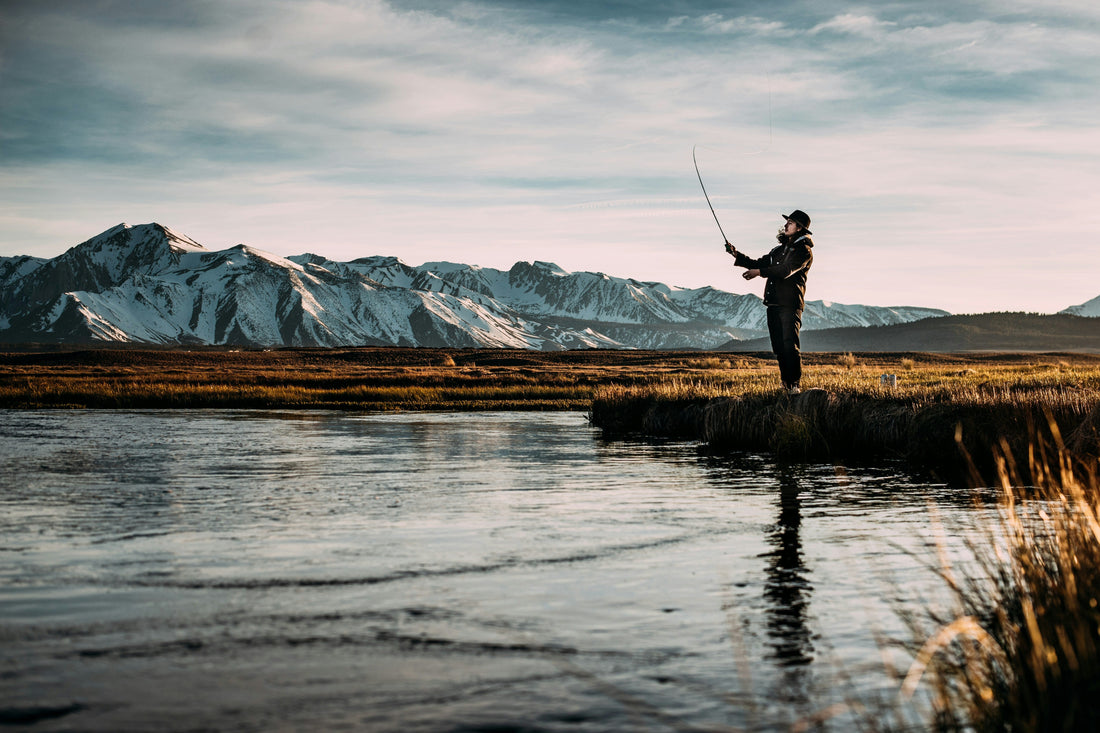
Essential Gear and Techniques for Fishing on Public Lands
Share
Essential Gear and Techniques for Fishing on Public Lands
Following our first fishing post in the "Fishing on Public Lands" series, where we covered planning your trip and selecting the ideal spot, it's time to gear up and hone your skills. At Not One Acre, sustainable fishing is about more than catching limits, it's about respecting ecosystems, minimizing impact, and supporting conservation through ethical practices. This second episode dives into essential gear, proven techniques, and public lands specific tips to make your outing successful and low impact. Build on your location choices with the right tools and methods, ensuring not one acre of habitat is harmed!
Why Gear and Techniques Matter on Public Lands
Public waters vary from remote streams to crowded lakes, so gear must be versatile, durable, and eco-friendly. Techniques should prioritize catch-and-release where needed to sustain populations, aligning with Leave No Trace from our earlier outdoor series. Proper setup reduces lost tackle (which harms wildlife) and enhances safety in shared spaces with hikers or boaters.
Essential Fishing Gear Checklist
Focus on lightweight, multi-use items for easy transport on public lands. Start with basics and adapt to your target species.
- Rods and Reels: A medium action spinning rod (6-7 ft) for versatility; baitcasting for bass or fly rod for trout. Pair with a reliable reel and line (4-10 lb. test for freshwater).
- Tackle and Baits: Hooks, sinkers (non-lead alternatives like tungsten), lures (spoons, jigs, flies), and live bait if allowed. Include a tackle box with extras to avoid littering lost items.
- Accessories: Polarized sunglasses for spotting fish, pliers/forceps for hook removal, net (rubber-coated for fish safety), measuring tape for size limits.
- Safety and Comfort: Waders/boots with felt soles (check for invasive species bans), life jacket for boating, hat/sunscreen. Our "Not One Acre" hat offers breathable sun protection with a message.
- Storage and Transport: Cooler or stringer for keepers, backpack for shore fishing, or inflatable boat for lakes (permit required on some federal waters).
Tip: Test gear at home or a local pond. Opt for biodegradable lines and barbless hooks to reduce environmental harm, especially in sensitive areas like national wildlife refuges.
Proven Techniques for Public Lands Fishing
Adapt methods to your chosen spot (from our planning guide) and species, emphasizing stealth in multi-use areas.
- Shore Fishing: Cast from banks using bobbers for panfish or bottom rigs for catfish. Move quietly to avoid spooking fish in clear streams.
- Fly Fishing: Match the hatch with dry flies for rising trout; nymphing for deeper runs. Practice roll casts in tight forest service spots.
- Boat or Float Fishing: Troll lures for walleye in reservoirs; anchor in drop-offs for bass. Check boating regs on BLM or USFS waters.
- Catch-and-Release Best Practices: Wet hands before handling, remove hooks quickly, and revive fish in current. Vital for overfished public spots.
- Species-Specific Tips: For trout, fish dawn/dusk with spinners; for bass, use soft plastics around structure. In coastal refuges, target redfish with shrimp imitations.
Special Consideration: In shared public areas, yield to other users—keep noise low and lines clear of trails. Monitor weather for sudden changes, as in our camping prep checklist.
Useful Resources for Gear and Techniques
Enhance your setup with these links:
- Take Me Fishing: Gear Basics – Beginner tackle advice.
- Orvis Fly Fishing 101 – Techniques and gear for flies.
- Bass Pro Shops: Bass Techniques – Species-specific strategies.
-
USFWS: Refuge Fishing Tips – Public lands focus.
Geared up? Sign up for our newsletter for the next fishing post, exclusive tips, and advocacy updates. Use code NOTONEACRE for 20% off gear!
